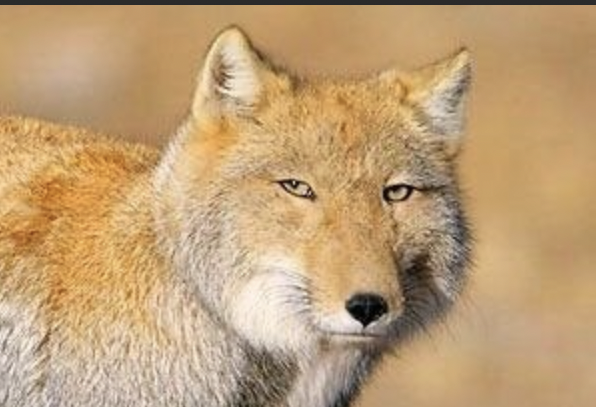
Tibetan fox


Wildlife and conservation new, wild travel information and links for booking

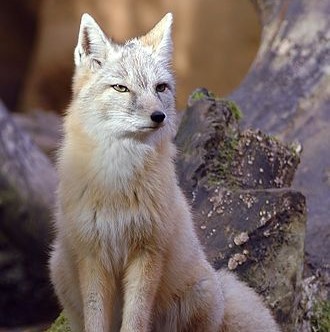
Corsac foxes are found in steppes, semi-deserts and deserts in central Asia, ranging into Mongolia and northern China. Since 2004 it has been listed as least concern. However, its population fluctuates wildly with history of its population dropping ten times over in a single year.
This small fox is native to central Asia and the middle east. It should be noted, that it is named for its British discoverer, but has a wide variety of other names including Afghan fox, royal fox, dog fox, hoary fox, steppe fox, black fox, king fox, cliff fox or Baluchistan fox
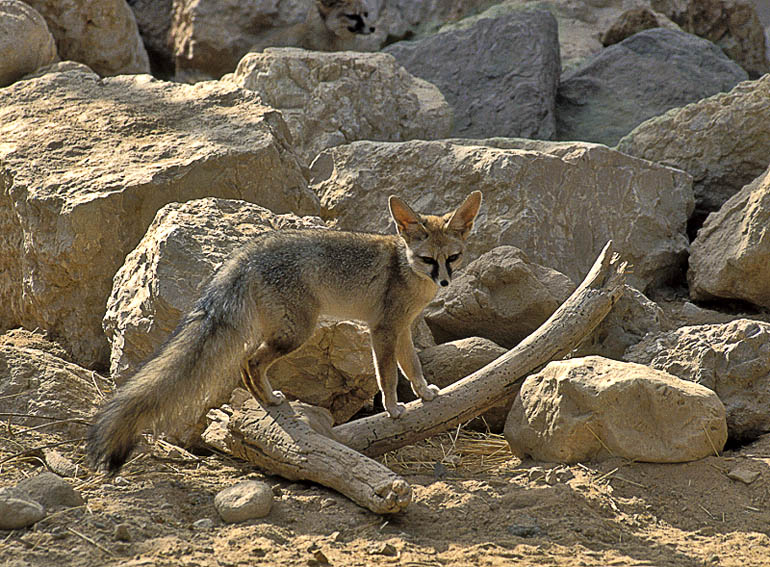
Once only known from southwest Asia, this species was reported in Israel in 1981 and was later found to be more widespread in the Arabian Peninsular. Peters and Rödel (1994) reviewed the available distribution records of this species and presented, for the eastern part of the range, what they considered to be definitive records from around the Iranian Plateau in Iran, Turkmenistan and Pakistan, with more doubtful records (usually based on skins collected from fur bazaars or otherwise indirectly) from Afghanistan and Tajikistan (though there is no such record).
There are also now confirmed records in the middle east from Jordan, the Sinai Peninsular (Egypt), Oman, Saudi Arabia and the United Arab Emirates. They have long been suspected of occurring in Yemen and have been reported at an altitude of about 1,200 m above sea level in Hawf Forest Al Mahre Governorate, in the far east of Yemen, near the border with Oman. It also seemed possible that they may have lived in western Yemen, where the mountains in southwestern Arabia were contiguous, and the camera trapping record in February 2014 in Wadi Sharis inHajjah Governorate, NW of Sana’a, now confirms their existence. There is a single record from Egypt, west of the Suez canal, of an animal captured in 1988, originally believed to be Vulpes rueppellii. There are no verified documents from here, but they may have existed.
At the current time, there is little directed persecution, and they are thought to have healthy populations across the middle east.
It was also sighted in northern Saudi Arabia[8] and in the Western Hajar Mountains of Ras Al Khaimah.[9] In 2019, it was spotted in Jebel Hafeet, United Arab Emirates.
The Bengal fox (also known as the Indian fox, and is found from the foothills of the Himalayas in the north through Southern India, and from eastern Pakistan to eastern India and South-eastern Bangladesh.

They are smaller than red foxes, and is endemic to the Indian subcontinent. It has been recorded 1500m up in the mountains (at almost a mile above sea level). Generally crepuscular (active in early mornings and late evening) as well as nocturnal.
As with other foxes, generally, they are thought to pair long-term, and then live together, and that this is the standard social structure in this species. However, often pups will stay around after they are capable of living alone. There have also been groups of up to 4 adults have been recorded sharing the same den.
Although found across a large area, they tend to live at very low densities, which means that they can quickly disappear from an area, in Southern India less than 2% of bengal fox habitat is protected. They are hunted for both skin and flesh Narikuruva tribes hunt them and have done for a very long time – however, with the increased number in these tribes, and other pressures on the fox, we need to keep an eye on this situation – otherwise it could rapidly become endangered.
The Japanese raccoon dog (also called the Tanuki) is a species that is native to Japan. Mainly nocturnal, although known to be active during daylight. They vocalize by growling or with groans which can sound like domestic cats – they also arch their back (like cats) when trying to intimidate other animals, however it trying to show submissions they behave like other canids by lowering their body to the ground or showing their stomach in submission.
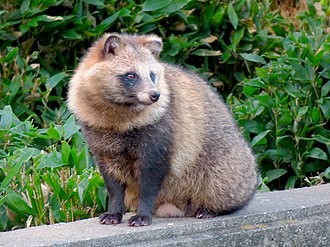
Social groups are usually limited to breeding pairs, but before pairing off, racoon dogs often form groups until this happens.
Usually monogamous, 4-6 pups are born after 9 weeks. They are looked after in the den for a month, and outside the den for a further month. Their wild lifespan is aound 7-8 years with captive specimens having reached 13 years.
They have sharp claws and have been observed usinig these to climb a tree, so as to forage for fruit and berries.
The Japanese raccoon dog is mainly nocturnal, but they are known to be active during daylight. They vocalize by growling or with groans that have pitches resembling those of domesticated cats. Like cats, the Japanese raccoon dog arches its back when it is trying to intimidate other animals; however, they assume a defensive posture similar to that of other canids, lowering their bodies and showing their bellies to submit.
Usually, social groups are limited to a breeding pair, but individual Japanese raccoon dogs may stay in a group of non-paired individuals until they find a mate.[5]
The species is predominantly monogamous. The breeding period for the species is synchronized between females and males and lasts between February and April. A litter (typically with 4–6 pups) is born after a gestation period of 9 weeks. The parents look after their pups at a den for around a month, and then for another month after the pups leave the den.
Japanese raccoon dogs live for 7–8 years in the wild and have reached the age of 13 in captivity.
They have been observed to climb trees to forage for fruits and berries, using their curved claws to climb.
They have been introduced to northern Europe where they are considered to be a pest.

The common raccoon dog (also known as the (Chinese or Asian racoon dog, to distinguish it from the Japanese racoon dog)is a species which is found in east Asia. Although named for its facial markings, it is not closely related to raccoons and, although part of the dog family, it is more closely related to the fox.
This animal has been widely introduced in Europe due to regular escapes from fur farms.
Common raccoon dogs are omnivores that feed on insects, rodents, amphibians, birds, fish, reptiles, molluscs, crabs, sea urchins, human garbage, carrion, and eggs, as well as fruits, nuts, and berries.
Wolves predate them, and eat many in the spring. In Russia, wolves can account for as much as 2/3 of the deaths. Other animals like badgers and lynx will kill them, but generally do not go out of the way to do so. A range of birds of prey also target them.
They are the only canid to hibernate. There are around 4 subspecies. The Japanese racoon dog was thought to be a subspecies until recently when it was elevated to being its own species. They are one of the species that is thought to be have spread covid, and there are other illnesses that their introduction has caused to arrive in new countries.
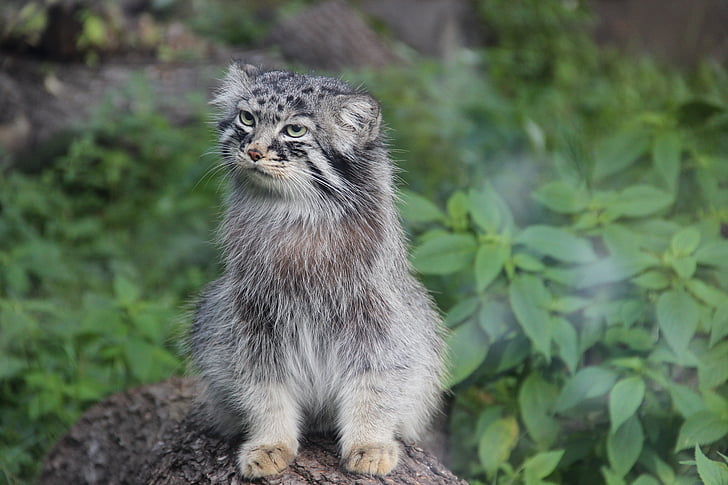
Often referred to as the grumpy cat or in similar way, the Pallas cat occurs in Central Asia, from the Caspian Sea through iran, Afghanistan, Pakistan and northern India to central China, Mongolia and southern Russia. Populations in the southwest portion of their range – the Caspian Sea region, Afghanistan and Pakistan – are diminishing, isolated and scarce.
It size is similar to the domestic cat, and is far less stocky than its thick fur might make people believe.
It specializes in hunting small mammals.
It is considered least concern in terms of conservation, but little is known about its behaviour or situation in much of its range.